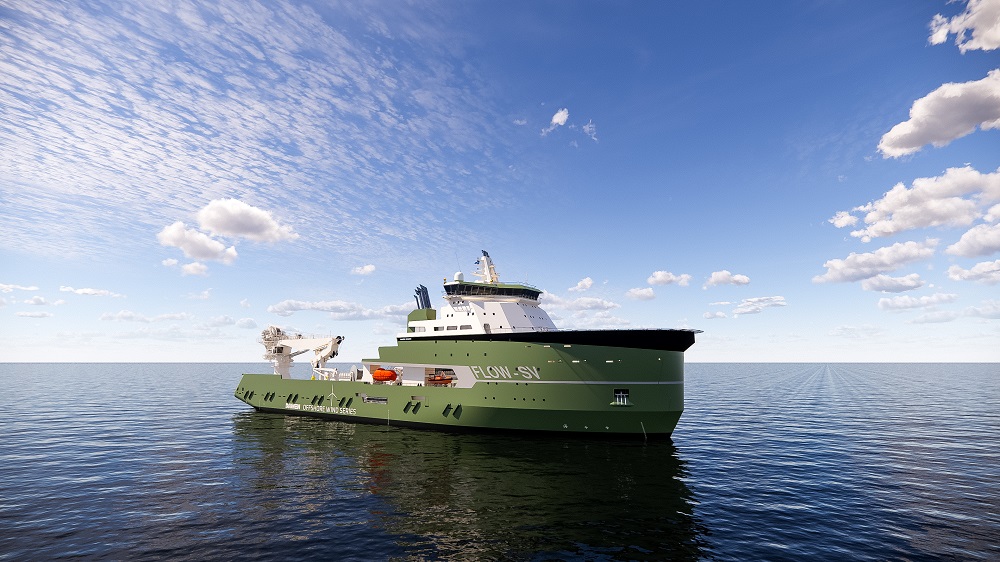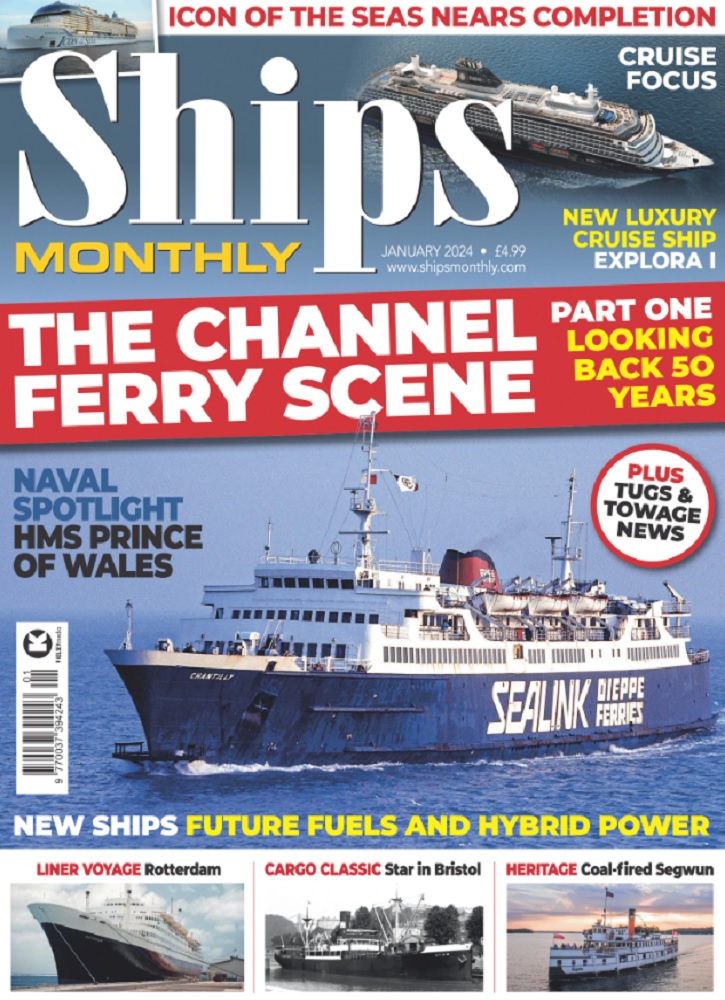Anticipating upcoming large-scale floating windfarm installation, Damen has developed the FLOW-SV vessel concept that can accelerate the development of this new maritime segment.
The Damen FLOW-SV is specially designed to install ground tackles for offshore turbine floaters.
The vessel can load the immense lengths of chain needed to install and secure nine anchors or suction piles. Instead of mooring 1 floating windmill in a mission, three can be secured.
It also applies sufficient proof loading on the anchors to make the installation more efficient.
“With the FLOW-SV, we have developed a vessel which covers the entire process of attaching mooring lines. This vessel, combining the supply, installation, securing and inspection of the ground tackles for floating turbines in one vessel, introduces a big step forward towards large scale installation of floating windfarms. The concept reflects our expertise in operational demands and efficiency,” says Wijtze van der Leij – Sales Manager.
“At the moment, we are still in the concept phase. But we are now entering a stage where we would like to partner up to refine and customise this concept. Together with a launching customer, we aspire to accelerate the floating offshore windfarm installation industry.”
Measuring approximately 150m in length with a 32m beam, the FLOW-SV is a big ship. The size and weight of anchors and chains needed for installing offshore floating wind turbines are so big that a larger vessel is needed than any anchor handling vessel before.
As the FLOW-SV will be able to take all the materials and equipment needed to install 3 floaters, the vessel saves time on transits and loading. Secured at all three corners, a floater needs three ground tackles.
When Damen engineers defined the amounts of gear that the FLOW-SV needs to take onboard to be able to install three floaters in a base case of 100 metres water depth, their calculations added up to five kilometres of chain (chain links of 152 mm diameter) 4.5 kilometres of fibre rope of 112 mm diameter, 9 anchors each weighing 15 tons and almost 100 clump weights of 10 tons each, D-shackles, tensioners, as well as steel cable.
Getting the gear to the place of operation means the vessel carries a load in excess of 4,000 tons. Depending on seabed conditions, depth and windfarm operator requirements, anchors can be replaced with suction piles to provide a secure ground tackle.
When deploying the anchors at sea, the chain is guided to large winches on the forward end of the large open aft deck, from where it leads over the deck to the stern where it is deployed into the water.
A 250-ton crane (at 12.5 m reach) with active heave compensation is installed along the aft deck’s starboard side while two smaller cargo rail cranes are available for handling gear on deck. A triple drum anchor winch can deploy 600 tons pulling force.
A unique feature of the FLOW-SV is the combination of bollard pull generated by the thrusters and added pulling force from the bow reaction anchor winch. This adds up to 1,000 tons of proof load.
The FLOW-SV deploys the bow anchor and embeds it by reversed bollard pull. She then moves to the spot where the anchor for the floater needs to be installed.
After letting out enough chain length, the anchor for the floater needs to be proof loaded, ensuring a secure seabed connection.
Using the four thrusters, FLOW-SV has 400 tons of bollard pull. Pulling strength is enhanced by the forward anchor handling winch, that generates another 600 tons. At that moment, approximately 1,000 tons of proof-load is acting on the turbine floater anchor.
Two fixed propellers in nozzles and two azimuthing thrusters at the stern propel the FLOW-SV and provide forward bollard pull. These propellers in nozzles turn 180 degrees to provide ample reverse bollard pull when the bow anchor is set.
The azimuthing thrusters are also engaged for dynamic positioning, together with the retractable azimuthing thruster and tunnel thrusters in the bow section of the vessel.



